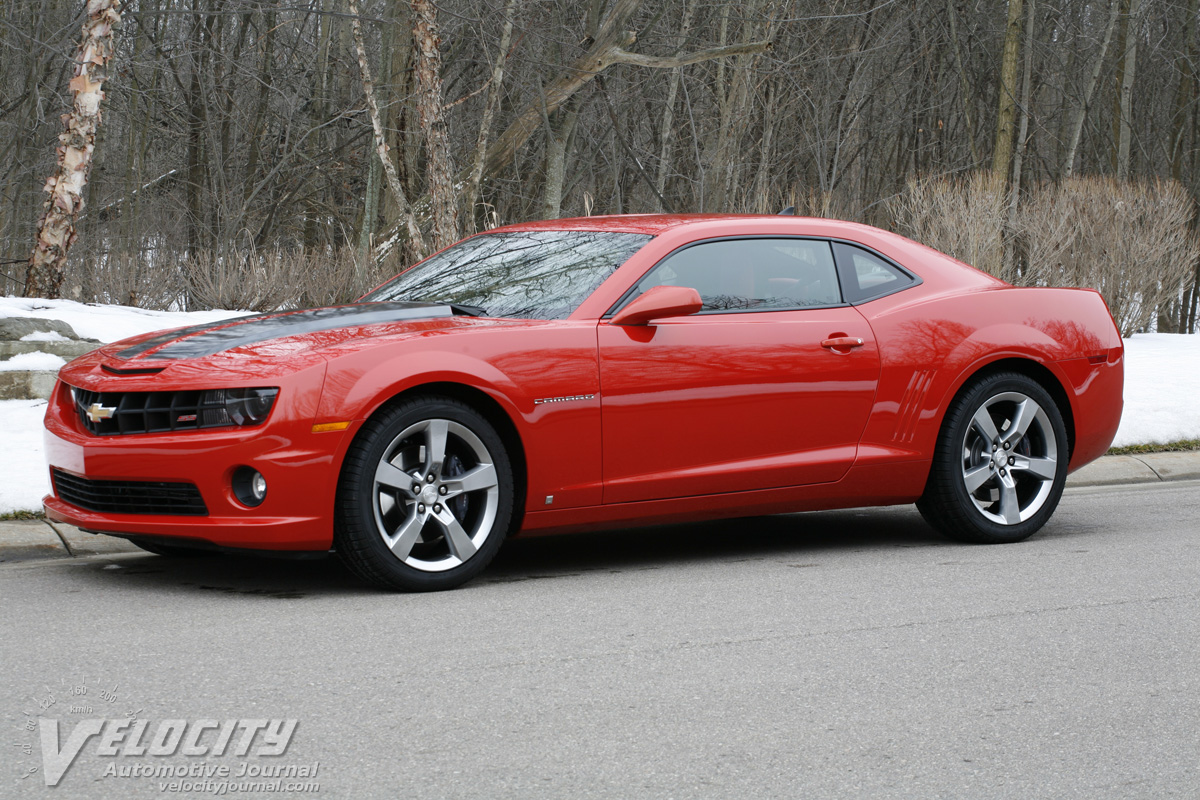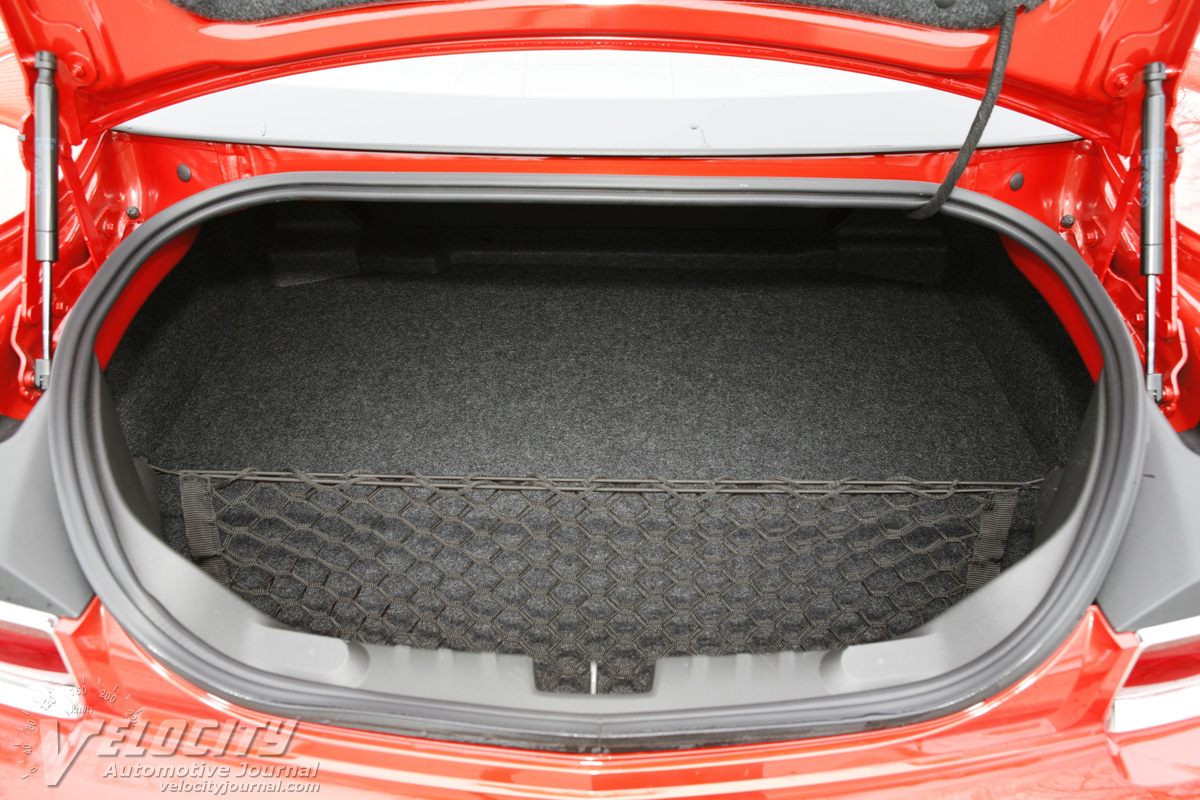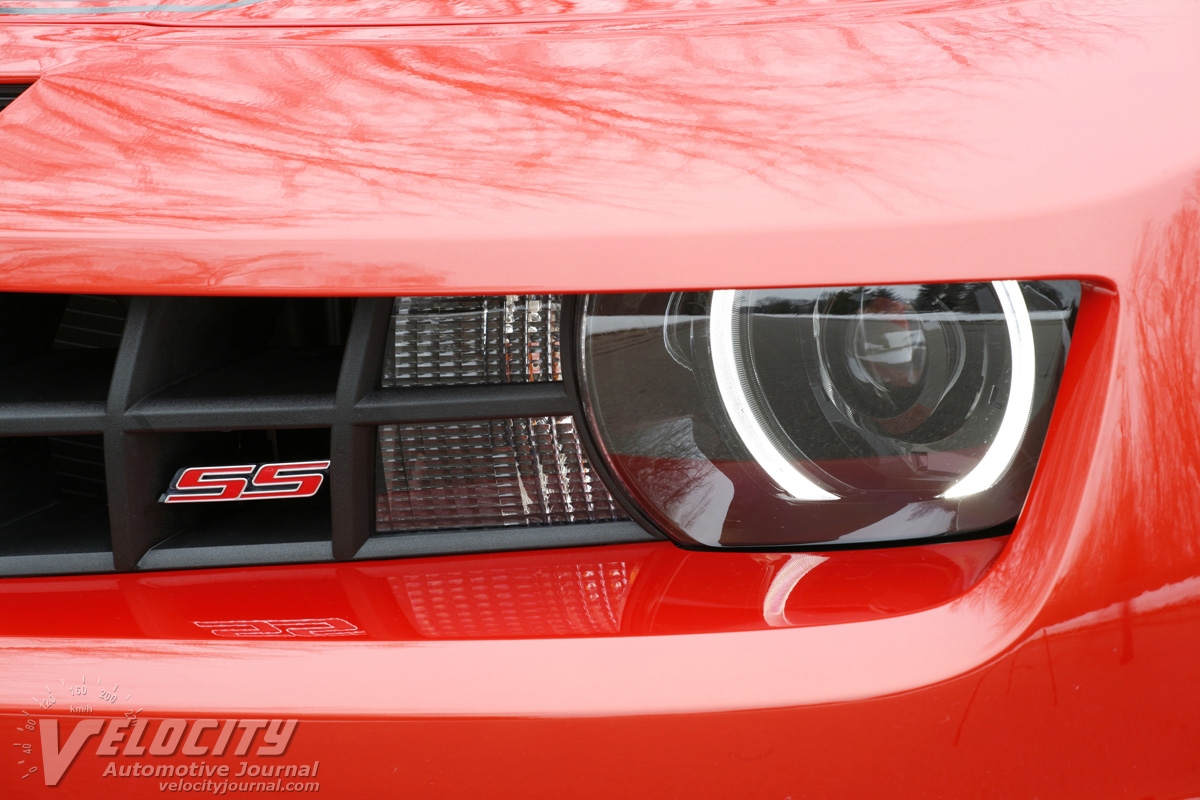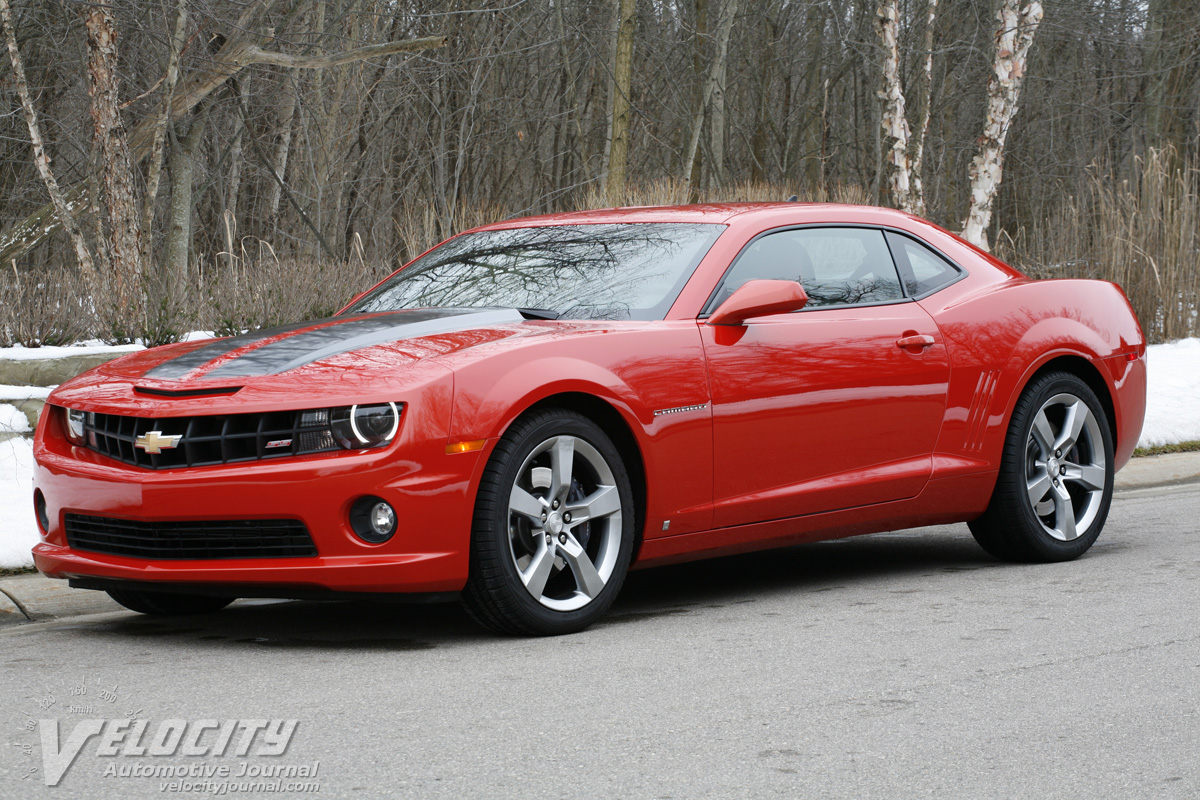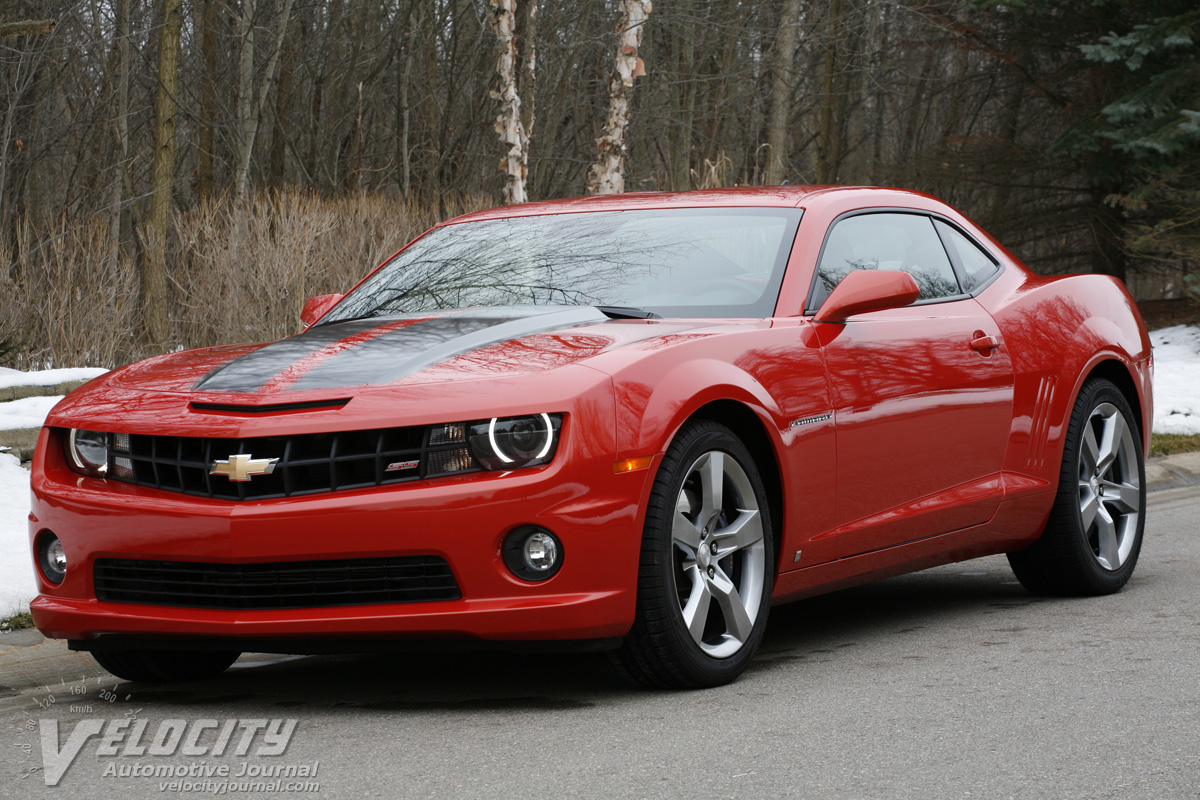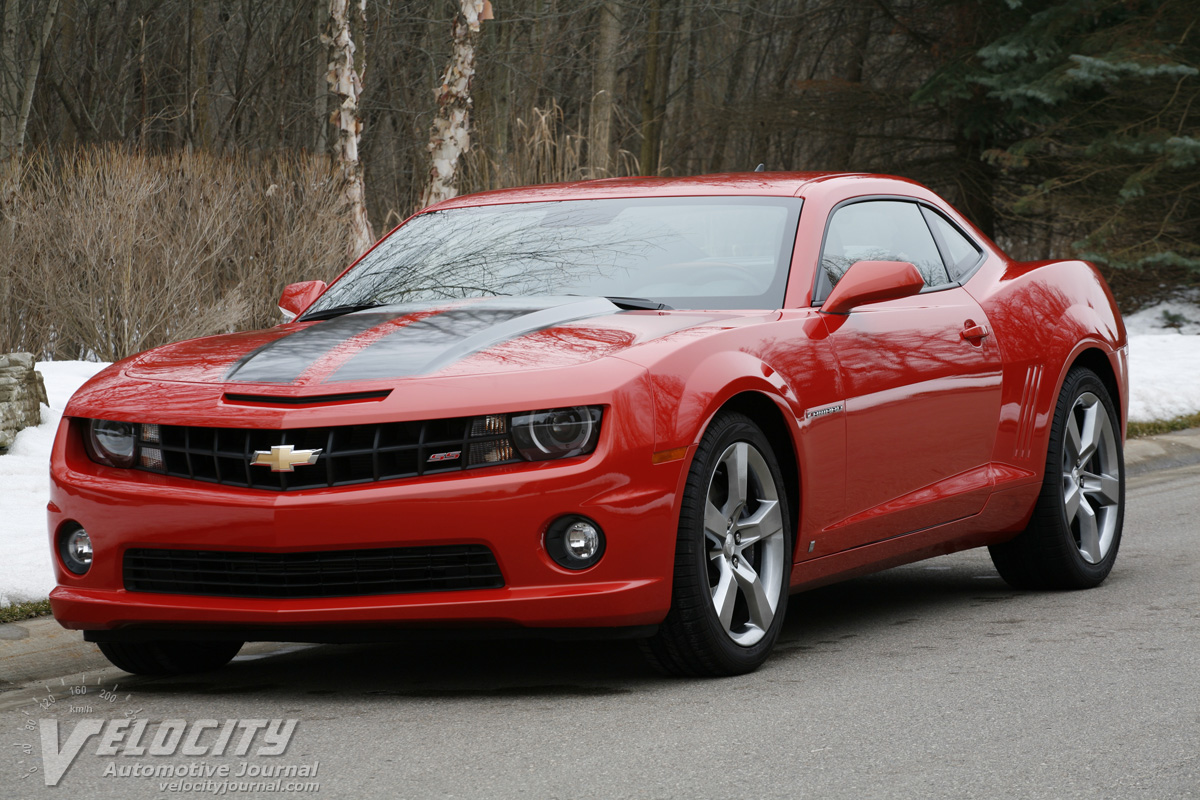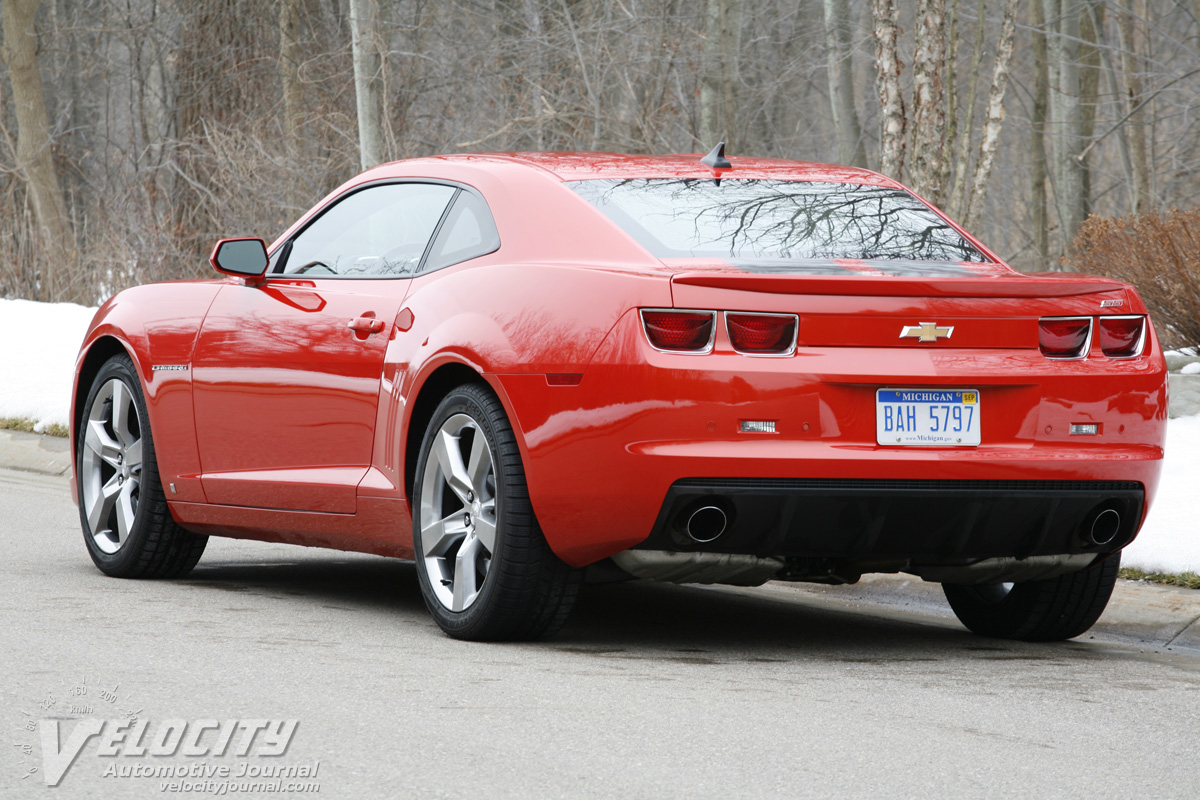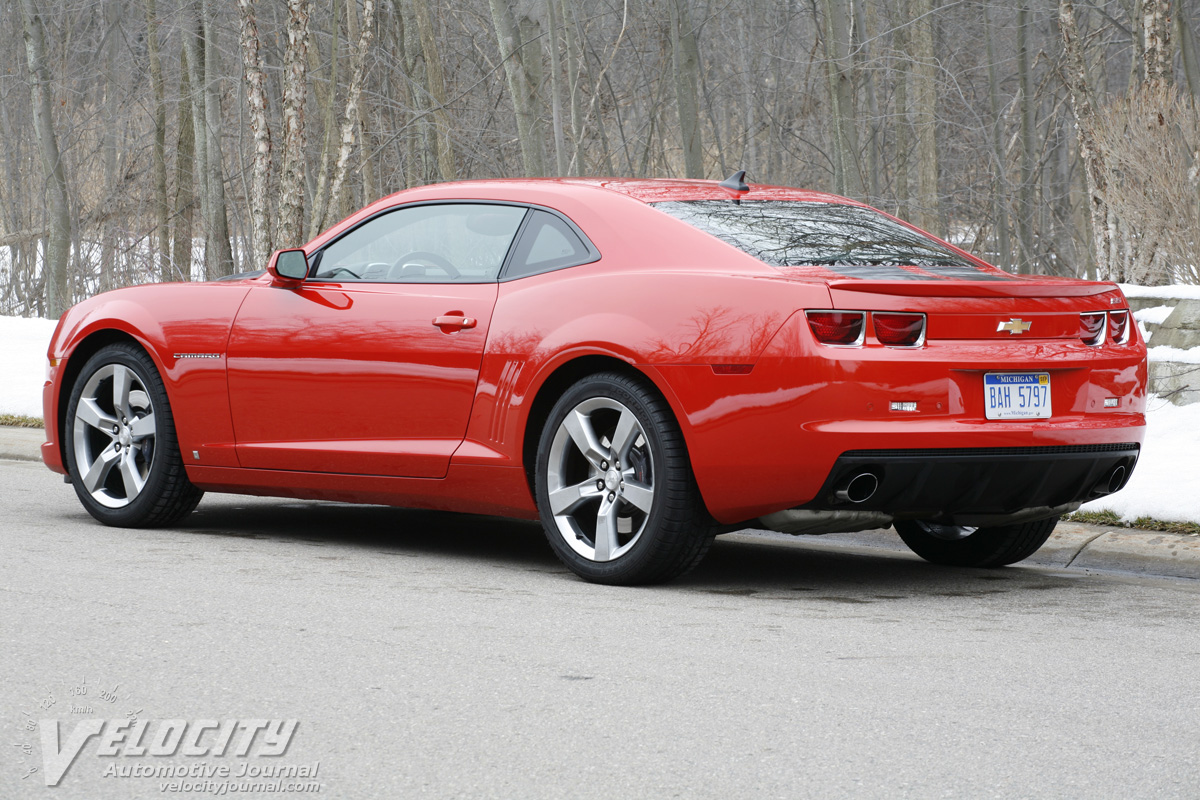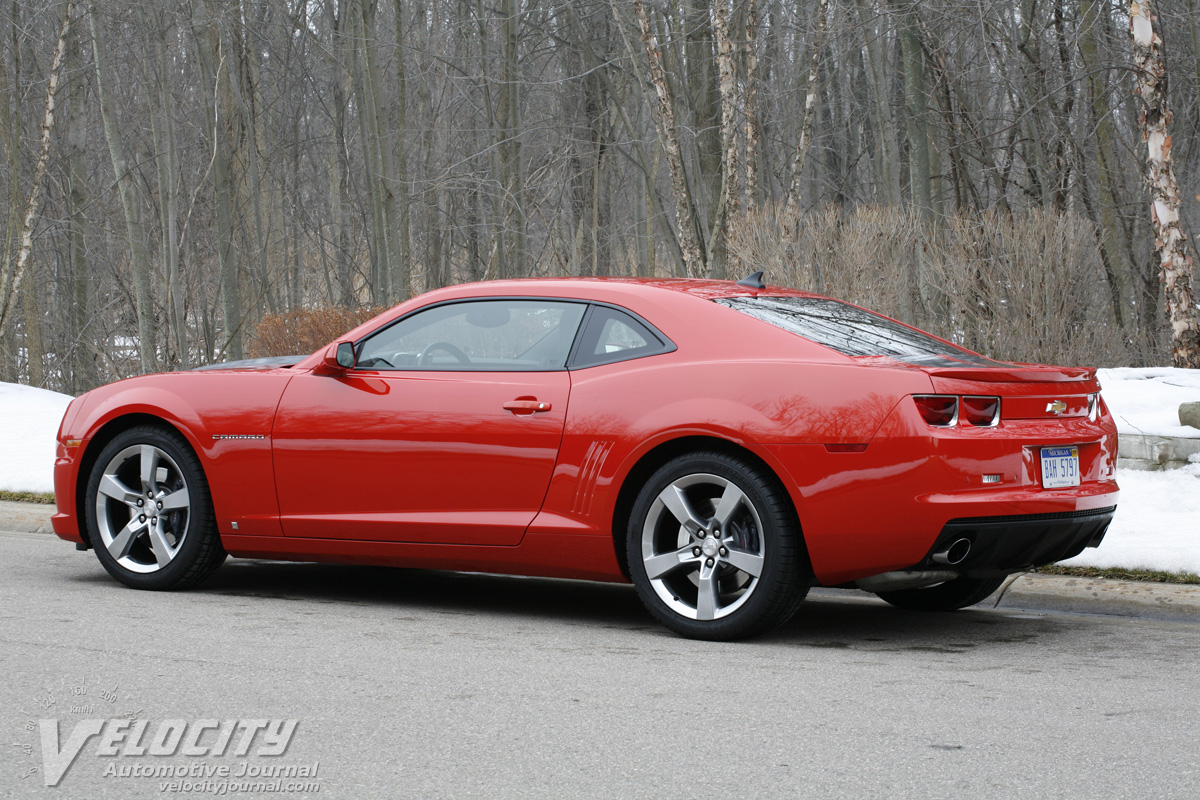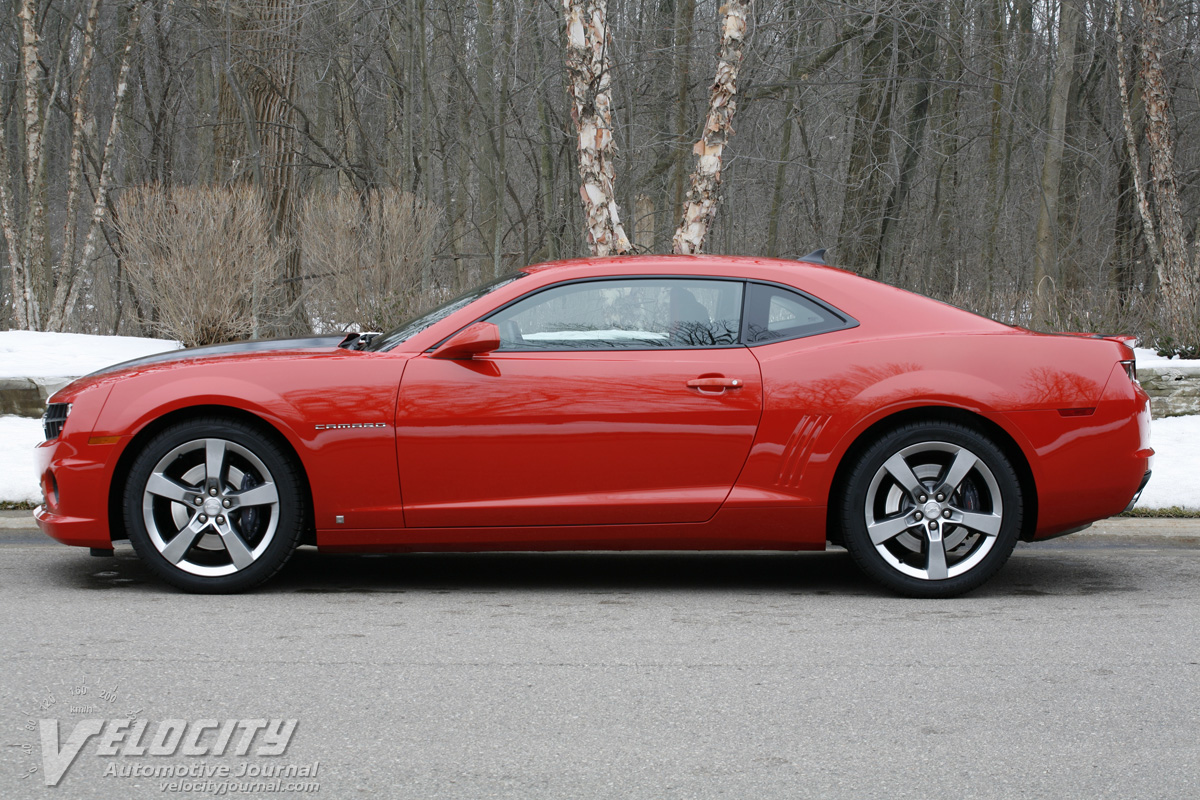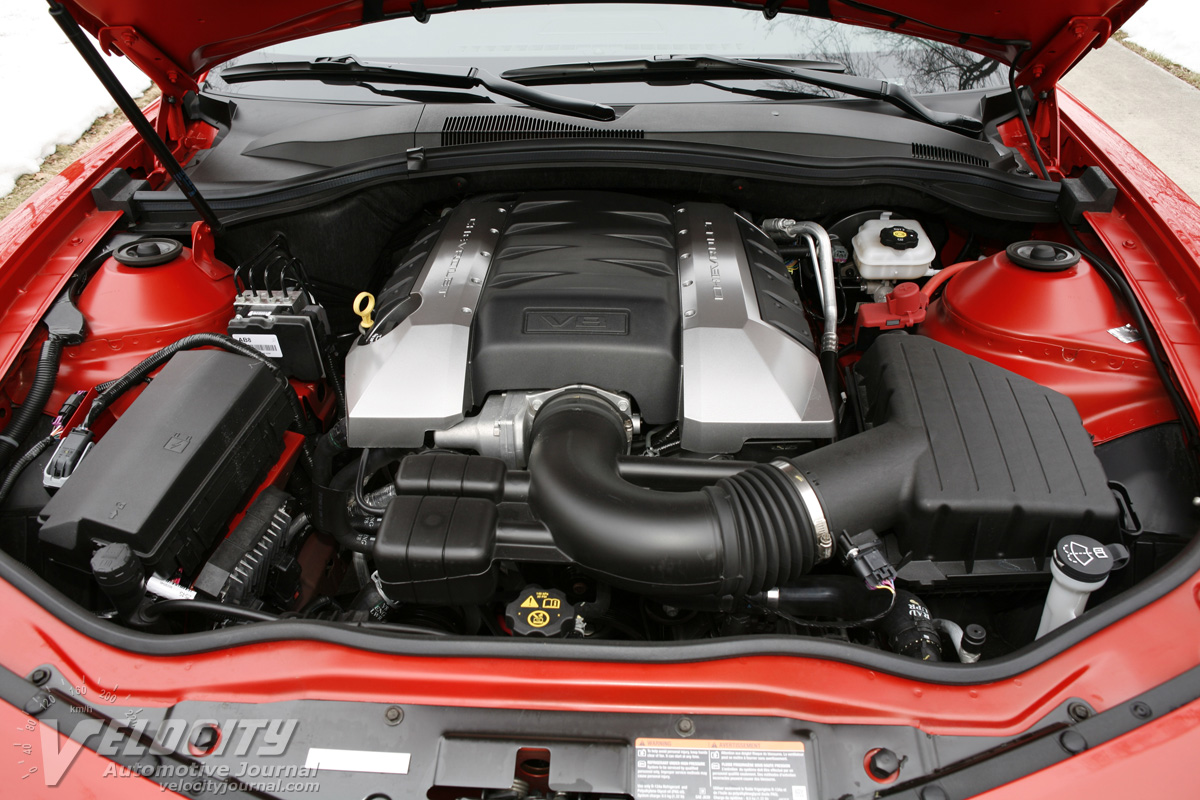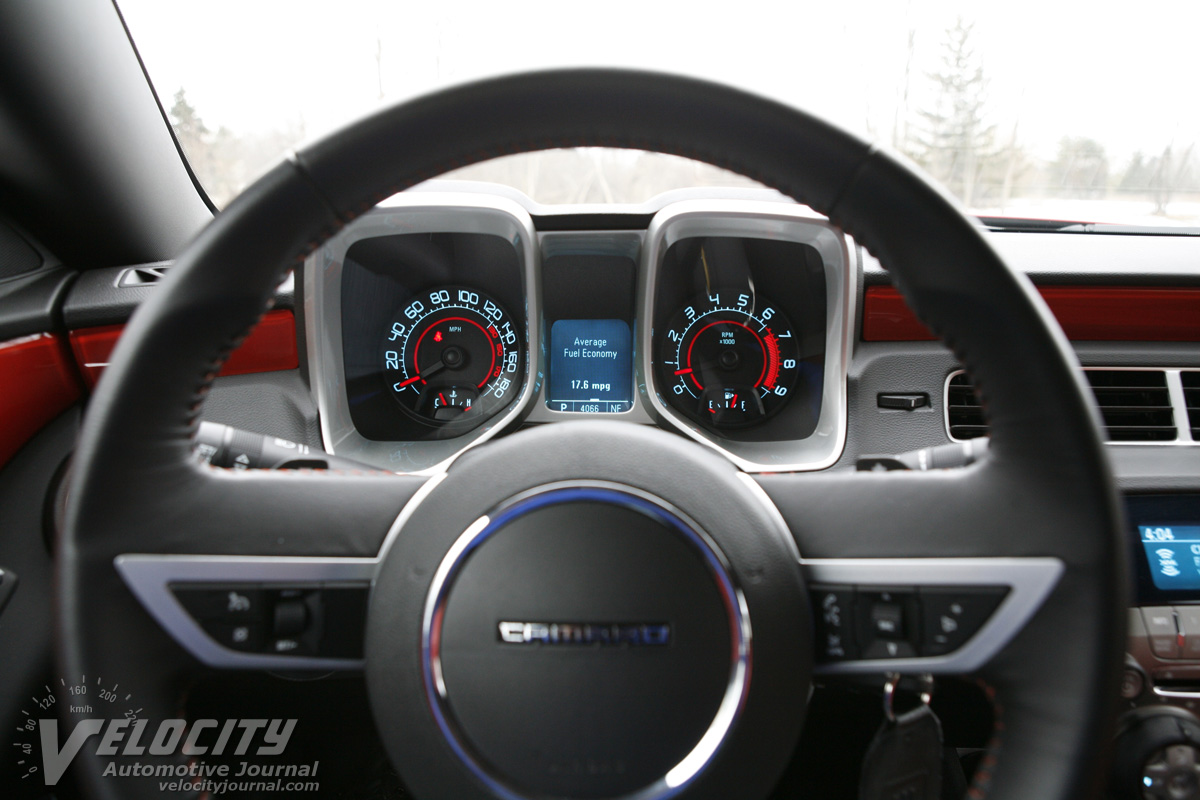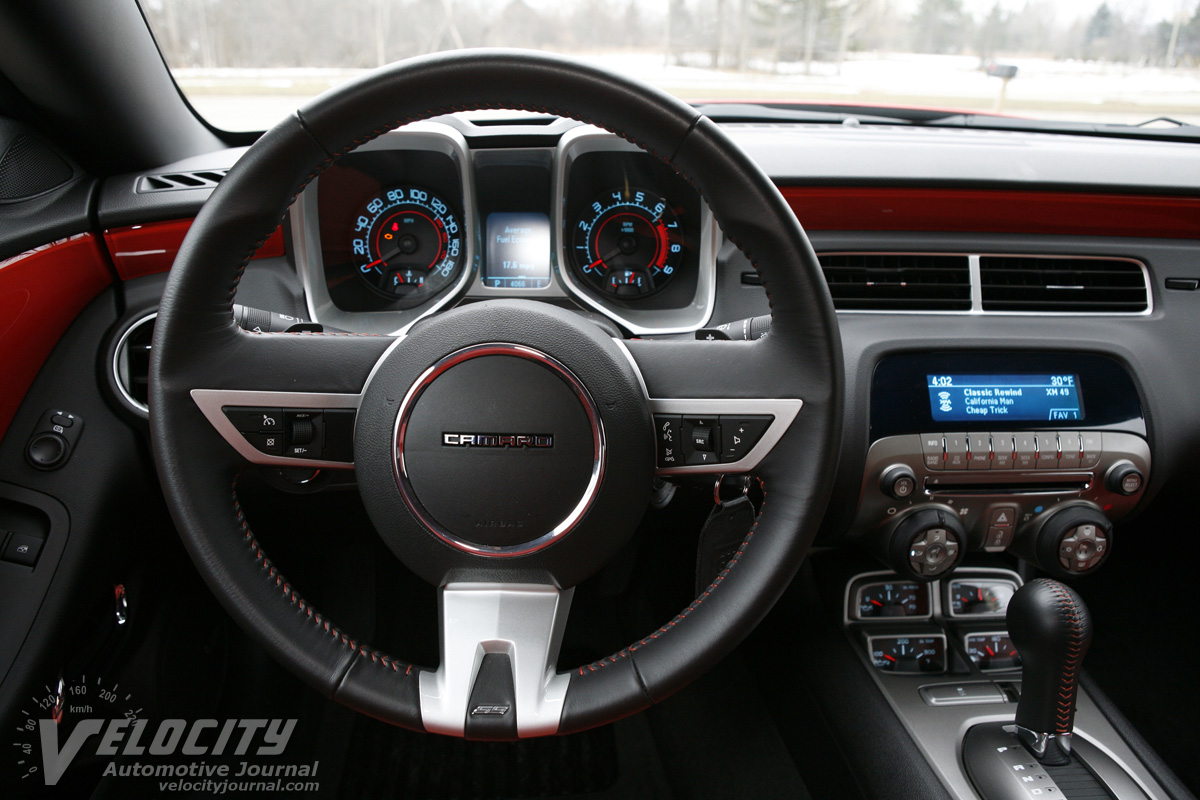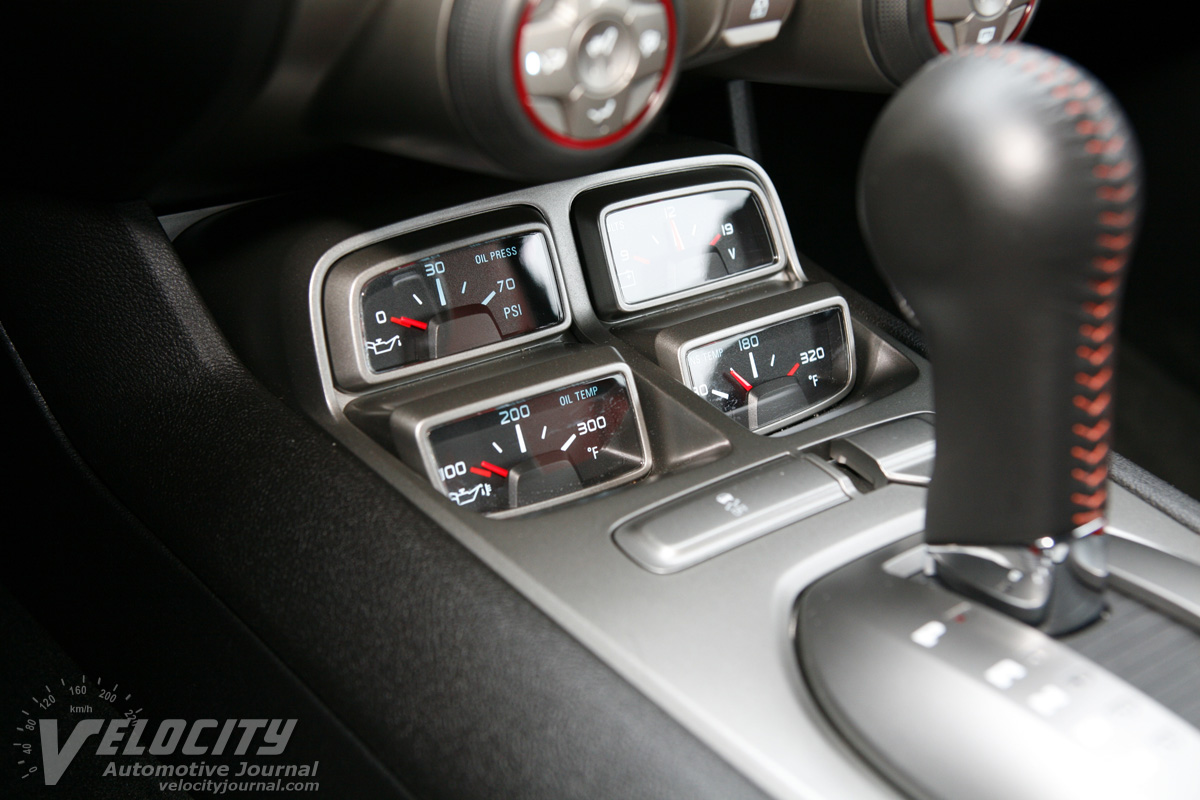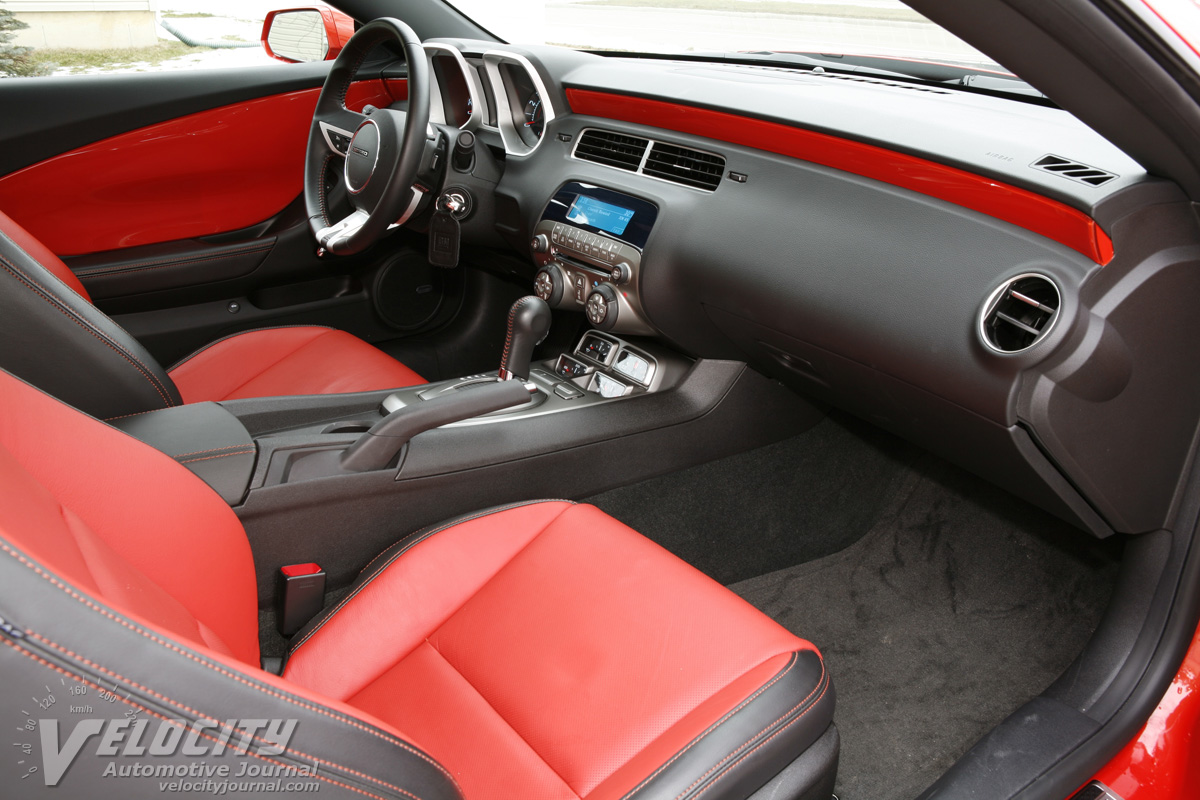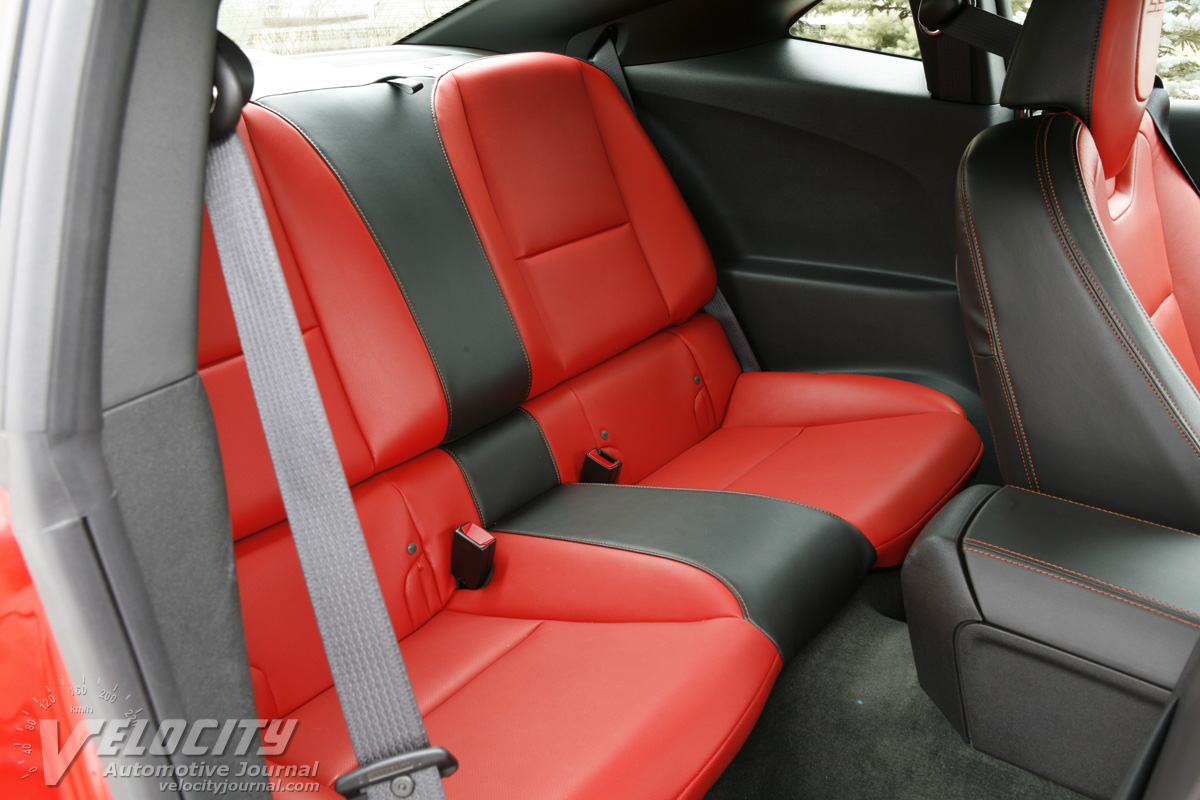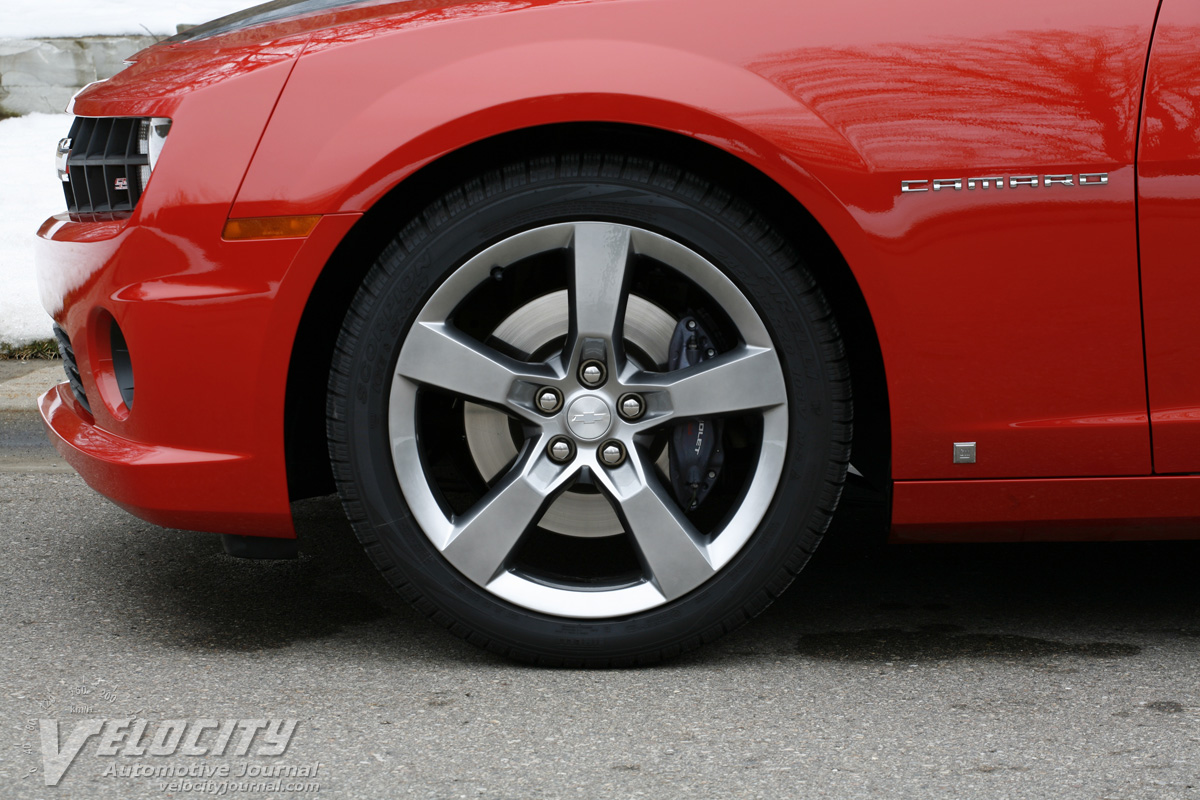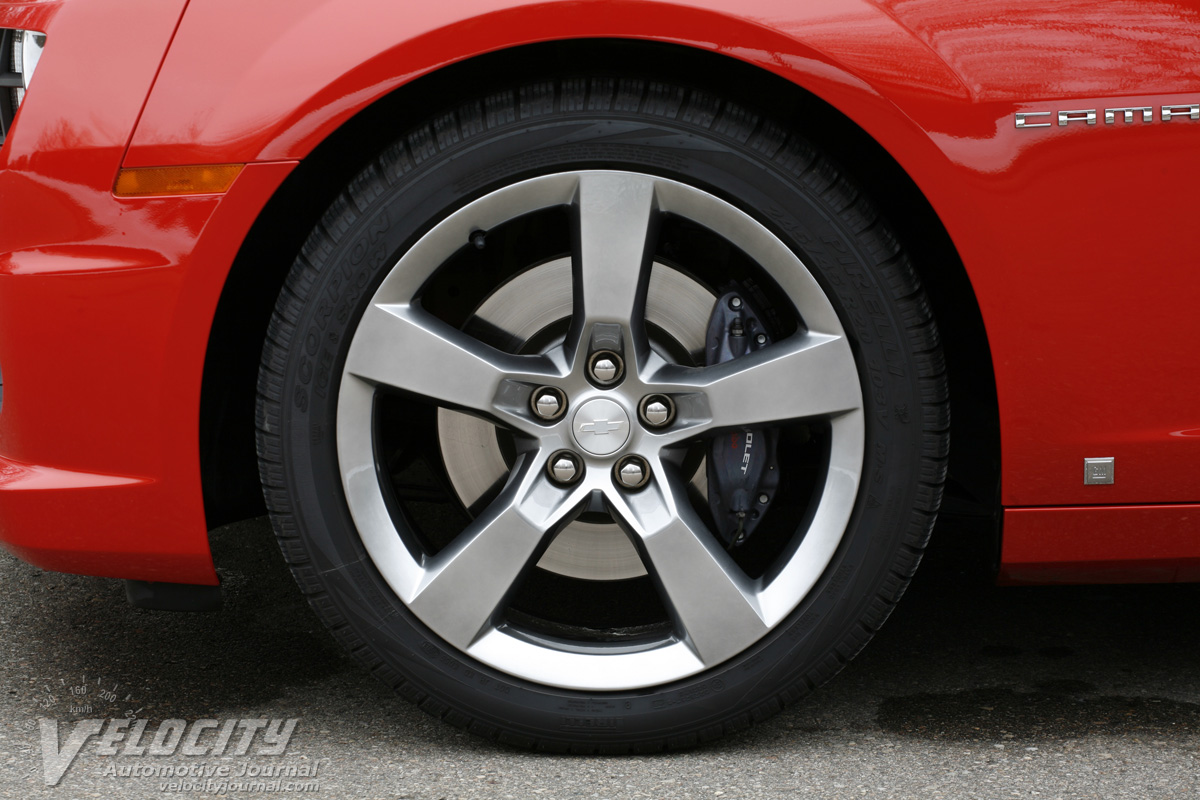2010 Chevrolet Camaro SS
02/03/2010
Shahed Hussain
Reviving an American icon, Chevrolet's new Camaro echoes the cleanly styled 1967 coupe without becoming a slavish replica of the original. Despite bearing a superficial resemblance to the first-generation car, the new Camaro is significantly larger, sharing its rear-drive platform with the recently discontinued Pontiac G8 sedan. Chevrolet offers the Camaro in three trim levels, starting with the entry-level LS, followed by the LT, and the brawny SS at the top model. Both the LS and LT are powered by a 304-bhp 3.6L V-6, while the SS gets the 6.2L V-8 with 426-bhp (LS3) or 400-bhp (L99). A 6-speed manual is standard equipment for the V-6 and V-8 engines, while a 6-speed automatic available as an option.
Of the two Camaro SS variants available, we tested the premium 2SS model equipped with the optional Hydra-Matic 6L80 automatic ($1,185). The L99 version of the 6.2L V-8 is detuned to 400-bhp due to the fuel-saving Active Fuel Management system. Options included the RS Package ($1,200), Interior Accent Trim Package ($500), Cyber Gray Metallic Strip Package ($470), and special Inferno Orange Metallic paint ($325). Including the $795 destination charge, the total sticker price came to $38,200. Of these option packages, we consider only the RS Package to be essential, as it includes 20-inch alloy wheels and HID headlamps. Staying with the standard 6-speed manual is tempting, as the LS3 V-8 cranks out more power and torque than the L99, and is coupled to a shorter final drive ratio (3.45:1 vs. 3.27:1). With these factors in mind, a manual transmission Camaro SS equipped with just the RS Package ($33,995) is the best value for performance-oriented customers.
Chevrolet wisely kept the Camaro interior simple and uncluttered, but managed to include the latest technology customers expect. Arrayed on the steering wheel spokes are controls for Bluetooth connectivity, audio and cruise controls. Steering column paddle shifters for the 6-speed automatic are within fingertip reach. A 180-MPH speedometer and a 9,000 RPM tachometer are in individual pods, along with smaller gauges for coolant temperature and fuel level. The thick speedometer pointer obscures the gauge markings, making it difficult to monitor actual speed. Between the dual gauge pods is a multi-function display that shows trip computer, odometer, and transmission mode status. In the spirit of early Camaros, the interior has a few retro elements such as quad gauges on the center console for engine oil temperature and pressure, voltmeter, and transmission temperature. While the gauges are certainly appreciated, they are tucked away from the line of sight, and partially blocked by the console shifter. The optional 245-watt audio system is from Boston Acoustics and includes nine speakers and XM satellite radio.
Brightening up the interior are orange and gray leather seats with matching orange door panels, with contrasting stitching on the seats and steering wheel. In comparison, the standard black interior seems dull, but Chevrolet is clearly aware that the bright orange interior color scheme may not appeal to all customers. Aside from the hard plastic dashboard, most other interior trim is high quality; the soft padding on the armrests is especially appreciated. We found the leather front seats are especially supportive and comfortable, with snug bolsters that cradle the torso and thighs. Surprisingly, the driver's 6-way power seat does not have adjustable lumbar support. The front passenger only gets manual fore/aft and power rake adjustments. Because of the low roofline, headroom for drivers over 6-ft. is inadequate, so the optional sunroof is not recommended. Front legroom is generous, but the rear footwell is miniscule. Likewise, back seat passengers get minimal headroom due to the steeply raked backlight. Outward visibility is restricted by the high dashboard and doors; the sweeping C-pillar creates a substantial blind spot, which is only partly alleviated by the exterior mirrors. Lane changes require care, and an occasional quick look behind the shoulder to ensure that no vehicles encroach on the blind spots.
For most prospective owners, the powertrain is what the Camaro SS is all about, and this all-aluminum V-8 supplies an endless stream of torque at any RPM or speed. The L99 V-8 is rated at 400-bhp @ 5900 RPM and 410 lb.-ft. @ 4300 RPM. Compared to the LS3 variant mated to the manual transmission, the L99 gives up 26-bhp and 10 lb.-ft. Blame the power and torque deficit to Active Fuel Management (AFM), which shuts off fuel flow to four cylinders depending on engine load.
Start the massive V-8 and the Camaro shudders from its massive torque, while a subdued, yet menacing burble escapes from the dual exhausts. At part throttle, the OHV V-8 is remarkably quiet and unobtrusive, but mashing the pedal causes all sorts of commotion under the hood as the Camaro slingshots past traffic. We did note some throttle lag, probably due to the AFM as it resumed fuel flow to the dormant cylinders. To minimize this annoyance, we preferred to leave the transmission in "M" (manual) mode, which appears to disengage AFM, or at least minimize its effects. For optimal transmission control, the steering column paddles allow fingertip shifts, and the Performance Algorithm Shifting (PAS) eliminates upshifts under high lateral acceleration (e.g. around curves).
While AFM is intended as a fuel saving technology, its benefits are most significant on the highway, where the automatic-equipped Camaro achieves a 25 MPG rating vs. 24 MPG for the 6-speed manual model. In the city, both transmissions yield an identical 16 MPG. During our test, we managed around 18 MPG in urban driving and about 22 MPG on the highway. A few full throttle romps will rapidly drop mileage into the teens, but a light touch on the gas pedal can yield fairly respectable fuel consumption. Although the base 3.6L V-6 in the Camaro LS and LT promises 29 MPG highway mileage, in the city, its 17 MPG rating barely surpasses that of the much bigger V-8. The mediocre city fuel economy is due to the Camaro's curb weight of 3,902 lbs. (SS w/automatic); even the lightest Camaro LT (6-speed automatic) weighs in at 3,719 lbs. A comparable 5.0L Mustang GT equipped with a 6-speed automatic is significantly lighter at 3,658 lbs., and the manual transmission version is only 3,603 lbs. However, the Mustang turns in similar estimated fuel consumption numbers of 17/25 MPG (city/hwy.), so GM's Active Fuel Management does compensate for the Camaro's weight disadvantage.
Choosing the optional Hydra-Matic 6L80 6-speed automatic takes the rough edges off this Chevrolet's naturally boisterous character. The transmission calibration allows the Camaro to crawl through heavy traffic without complaint, yet the V-8 will cut loose when the road opens up. Nonetheless, despite having shorter overall gearing (higher numerical ratios) vs. the manual, the L99/automatic combination just cannot match the LS3 and 6-speed manual for pure anti-social fun. Granted, the paddle shifters regain most of the control that driving enthusiasts insist upon, but the Tremec TR6060 manual is just a perfect match for the Camaro SS. Having spent some time driving the manual transmission-equipped coupe, we cannot recommend it highly enough, as it really awakens the beastly LS3. Unless you're planning to subject your Camaro SS to the rush hour grind, get the manual gearbox.
A car with the performance credentials of the Camaro SS deserves serious braking hardware, supplied by Brembo. Vented disc brakes with four-piston aluminum calipers are at all four corners; rotors are 14.0 in. diameter (front) and 14.4 in diameter (rear). Standard ABS and Stabilitrak stability control keep the Camaro under control. A center console mounted button toggles the Stabilitrak system on or off, and a competitive/sport mode is available for track use. The Brembo brakes have no trouble hauling down the Camaro from any speed. Pedal feel is superb, with progressive effort that inspires confidence.
As the first Camaro with an independent rear suspension, Chevrolet broke with the tradition that dictated a solid axle is essential for a muscle car. The cryptically named 4.5-link rear suspension layout uses coil springs, dampers, and tubular stabilizer bar; at the front are multi-link struts with coil springs and tubular stabilizer bar. Choose the optional RS Package for special 5-spoke alloy wheels shod with 20-inch summer tires: P245/45ZR20 in front and P275/40ZR20 in the rear. If the standard wheels aren't big enough, Chevrolet dealers have two available 21-inch wheel/tire combinations ($4,680 or $4,865 extra).
Our test vehicle had non-standard Pirelli Scorpion winter tires suited for winter driving in Michigan; the front tires were a lower profile 245/40R20 size, but the rear tires were identical to the factory fitment. Unsurprisingly, the Pirellis cannot take full advantage of the 410 lb.-ft. of torque available, but the Stabilitrak stability control manages to keep the rear tires from melting at every stoplight. We chose to keep the Stabilitrak engaged to ensure no surprises on the wintry streets. Our earlier drive confirmed that the standard summer tires can handle the Camaro's power in warmer weather, at least with the stability control turned on. The trend toward ever larger wheels and tires often results in degraded ride and handling from the added unsprung mass, and we could feel tire thump over every bump and imperfection. Granted, the Pirellis were not the standard tires, and the standard summer tires do ride significantly better, especially on undamaged pavement. However, we would be wary of ordering the expensive 21-inch wheel/tire combination without a thorough test drive first.
The Camaro's crisp turn-in response is a pleasant surprise considering the nearly two-ton curb weight, but the 52/48 front/rear weight distribution minimizes understeer. Variable-assist rack-and-pinion steering provides a relatively quick 2.5 turns lock-to-lock. Although the chassis tracks straight on smooth surfaces, the steering becomes notably jittery on bumpy or cambered roads. Even with the summer tires, the Camaro follows every rain groove and rut, requiring the full attention of the driver. While the nervous steering could become fatiguing on extended road trips, we didn't find it to be a problem on a 320-mile day trip where the Camaro proved to be a docile long distance cruiser.
During our time with the Camaro SS, we were impressed with its aggressive styling and gut-wrenching performance. Aside from a few minor criticisms that don't detract much from its appeal, the Camaro is a worthy successor to a long line of Chevrolet muscle cars. Purists will likely prefer the 6-speed manual for its direct, unfiltered connection to the thumping V-8, but the automatic gearbox ensures that the Camaro SS is accessible to a wider audience. Although comparisons to the Mustang GT are inevitable, we doubt that many customers cross-shop both cars. Chevrolet fans can rejoice, the Camaro is back.

